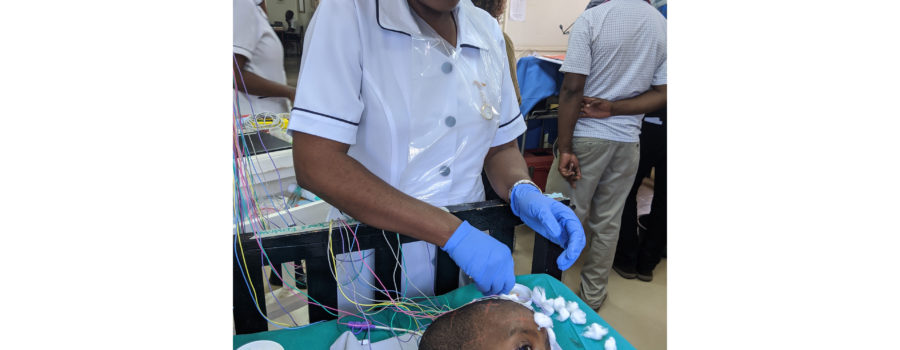Every day when working, I marvel at how organized I am, despite being simultaneously pulled in multiple directions. I open my work laptop and there are dozens of folders, each one containing hundreds of documents. I often think about the scientists who came before me. How on earth did they ever get anything done? I envision large filing cabinets full of paper folders and sharing things with colleagues through the US Mail. Not very efficient, but perhaps it led to deeper thinking.
Increased efficiency through technology comes with costs. When working in a resource-limited area, sometimes technology is not available. When conducting clinical research in a developing country, this requires the need to consider “work-arounds” when things go wrong. For example, when conducting a clinical trial, we need to assign children to treatments. We do this via the Internet using an electronic system to randomly assign patients to different treatment groups. But sometimes the Internet doesn’t exist or is so slow that it is non-functional. What then? As a backup, we have the old-fashioned numbered paper envelopes we can open. They have identical information to what we can access on the Internet. We rarely use them, but they are present as a back-up in case the Internet goes down.
When it functions, I believe technology improves patient care for some of the people living in resource-limited areas. Two examples come immediately to mind, EEG and MRI interpretations. I am one of the EEG interpreters for the Blantyre Malaria Project and our system is great. Brainwave (EEG) studies are acquired by one of two technicians, Monica Sapuwa (pictured) or Elizabeth Kalanga. After recording, Monica or Eliza copies the EEG computer file to an external hard drive. This EEG file is then copied into DropBox. They place a WhatsApp group message (“MW EEG” is the group name) and we all receive the notification. If we are “on service” we download the EEG from DropBox, interpret it, take a photo of our computer screen with the interpretation on it, and send that via WhatsApp to the physicians caring for the patient. This entire process (once the EEG is in DropBox) is about 30 minutes. I dare people in the USA to try to beat that. I have interpreted EEGs recorded in Malawi in “real time” when at home in Washington DC and even when seated on an airplane. I am still amazed at how fast we can provide an interpretation to the people caring for these children.
Instantaneous communication through technology has allowed my colleagues and me to optimize medical care for gravely ill children in Malawi.
This past weekend, though, the neuroradiologists put us to shame with MRI interpretations. On Saturday we began randomizing again for the Treating Brain Swelling clinical trial. That morning a child with cerebral malaria was admitted to the Research Ward. They were a possible clinical trial participant and might be eligible to receive one of our new therapies if they had brain swelling on MRI.
Karen Chetcuti, a neuroradiologist based in Malawi, viewed the scans and assigned a brain volume score. Per our protocol, she needed a second opinion. She put out a message on the “Malaria MRI call team” WhatsApp group and two US-based neuroradiologists, Manu Goyal and Lorenna Vidal, answered. The three neuroradiologists, one in Malawi and two in the USA, had a rapid-fire WhatsApp conversation. Their messages flew down my phone’s screen as each of them simultaneously viewed the MRI scans and typed their impressions. In ten minutes, we had an answer. The child was enrolled in the clinical trial and randomly assigned to one of the new treatments. To do so, the doctors in Blantyre used the back-up envelopes because the online randomization system was not functioning! It was a mixture of high-tech and low-tech coming together once again.
Like most things in life, technology has its share of negatives. I am often too connected. During the weekdays I check my email too frequently. Facebook, Instagram, and Twitter all waste my time each day. People do not seem to talk in public anymore; they are constantly communicating through their phones and pay little attention to their surroundings. But instantaneous communication through technology has allowed my colleagues and me to optimize medical care for gravely ill children in Malawi. Perhaps it is not a bad trade, after all.






